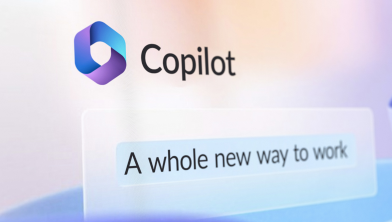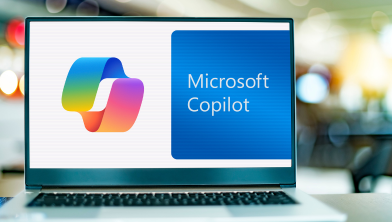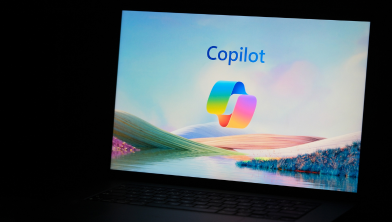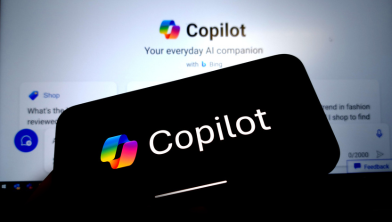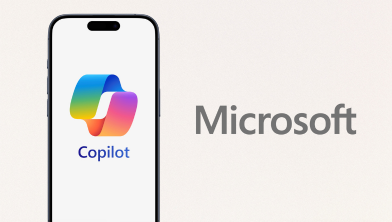What's the secret to successful GenAI implementation?
Digital tools that harness the power of Generative AI are easier to access, and more readily available, than ever before. If GenAI doesn’t already impact how your business gets done, it soon will. And its power is transformative.
By Martin Nürnberg Gundertofte, CTO at WorkPoint
You only have to look at Microsoft 365 Copilot to see what’s already possible. The integration of AI ‘copilots’ into everyday Office apps is a defining moment for GenAI, as it moves from being a specialist tech tool to something that more and more people understand and use in their everyday work.
These are exciting times for organisations looking to drive efficiencies and competitive advantages from AI tools. For business leaders, the challenge is how to implement GenAI safely, securely, and successfully.
Take a people-first approach to implementation
Since OpenAI’s ChatGPT became publicly available in 2022, general understanding of GenAI – and its potential – has increased. But there is still work to be done. Some people are fearful that AI will replace them, while others are excited about working alongside AI ‘copilots’. People need to understand how and why AI can benefit their daily activities, and transform the way they work. As with any IT implementation, it takes time for people to adopt new technologies. There’s a learning curve, and embracing it takes time and motivation.
Any new addition to your tech stack is best viewed as a tool for humans to do things better. And like any digital tool, the successful implementation of GenAI within your organisation largely depends on the people using it. In fact, getting their buy-in is business critical; it simply won’t work without them. That’s because the intersection between people in your organisation and AI is not only where the technology becomes most interesting, but the point where it can add the most value to your business.

Ensure continuous critical evaluation of GenAI
There are known pitfalls to implementing GenAI across any organisation, not least, defining which data it can access without compromising security and reliability. The potential for the unintended proliferation of false information, or the exposure of sensitive data, are real risks, especially when using a black box AI.
Almost certainly, your organisation has a hierarchy of access rights to data and documents. Now, let’s say someone at a senior level uses GenAI to create content and that includes information restricted to their level, role, or team. Suddenly, restricted data is not only exposed to other people in the organisation, but to AI, which can now use it to create other content.
Not only do leaders need to keep a critical eye on the data accessible to AI, but also the outputs. ‘Hallucinations’ – false, patterns, logic, or information presented as true by an AI – are a key reason to monitor output, and place a layer of human oversight on top of AI-generated content.
Governance of data and AI is essential. You need a clear policy, one that you must be prepared to revisit, revise, and update regularly. Unlike other policies, which might sit inside a folder, and are only seen and reviewed once or twice a year, any internal policy around the responsible use of GenAI needs to be front and centre of all your strategic decision-making. After all, it has the power to impact almost every aspect of your business.
Designate data stewards for data quality and integrity
Every new technology brings its own challenges, and this inevitably creates new roles and responsibilities. With GenAI, data management has moved on. Today’s organisations need data stewards – guardians of data quality with oversight of the volumes of data produced – to limit and control new data created by GenAI.
Effective data stewardship relies on holding documents and data in a cloud-based solution. That’s because very few companies have the on-premise capabilities or data centres powerful enough to support AI implementation across their entire organisation. But that migration requires trust in the cloud platform. For most modern businesses – Microsoft Azure provides the reassurance they need over reliability and security.
For business leaders and data stewards, it’s important to define relevant information that AI can draw upon to create new content. GenAI works on probabilities. So if your data is unreliable, incorrect, or not relevant then the probability of getting an invalid answer increases. That’s why it’s important to narrow down and define the dataset used by AI.

CTO, Martin Nürnberg Gundertofte has an extensive background within the tech and IT industry.
For two decades, he has worked with a variety of IT solutions, both in terms of development as well as consulting.
To Martin, good tech is tech used to create products that make a real impact, as well as add value to the work-life of customers.
Encourage a reflective culture around GenAI
From building AI models to using them, everyone in your organisation has responsibility for AI. The ability to fail fast and learn is an important one for GenAI. To drive innovation, people need a safe space to experiment and test out possibilities.
When things don’t work out or go to plan, it’s important to reflect on why that is. Whether people need better education around using a certain AI tool, or there’s a problem with the tool itself, a culture of positive critical reflection – and having a growth mindset – is essential.
In terms of the technology, licensing private AI and creating AI factories is a way to safely prototype and test GenAI. But knowledge sharing is also hugely important. That’s because in an organisation, it’s rare for only one person to be performing activities that can benefit from AI.
Knowledge sharing is important when things don’t work out and when they do. Sharing failures and successes is a way to accelerate the development and application of GenAI to processes and workflows to help save time and money.
Build specific AI tools for specific roles
Tools powered by GenAI also need to reflect the workers using them. Most organisations typically have various people at different stages of their careers. Building an AI tool for someone new to the business might look very different from developing one for more experienced, highly-skilled workers with deeper expertise, and organisational knowledge.
The trick is to build tools aligned with the needs of different groups within your organisation. That means designing GenAI tools for both the new starter and the highly-experienced employee so that everyone sees the value of using AI to enhance their work. Each person needs to feel like they have something to gain from GenAI tools.
AI can play a significant role in product development. Take a sector like software development, for example. It’s highly structured and has extensive documentation available in the public domain. GenAI is well-suited to applications such as building test cases or producing documentation.
It’s also a valuable tool for generating ideas – things you may not have considered – in terms of product development. All it needs is a layer of human oversight to apply an idea to a real-world context and decide if it makes sense. In fact, GenAI has potential applications at almost every stage of development.
It's a long-term investment in the future
Realising the true potential, and optimising the business value of AI, takes investment. To enhance what’s already there, leaders need to invest resources in AI models and AI development programs with real relevance to their core business, workflows, and operations.
It’s also fair to say that the impact of GenAI tools may not be immediate. It could take years. Many organisations are currently testing the waters, seeing what works and what doesn’t to maximise the potential of GenAI for their business needs.
Ultimately, the real value in GenAI tools will come from the people using them, as they start to transform their ways of working, and consequently change their organisation. It’s people and how they use AI tools that will make the biggest difference to how business gets done for the better.
Whether you’re a consultancy, a manufacturer, a software vendor, or any other type of business, it’s good to remember that GenAI is still in its early stages. That means there’s still a long – and exciting – road ahead for AI development.



